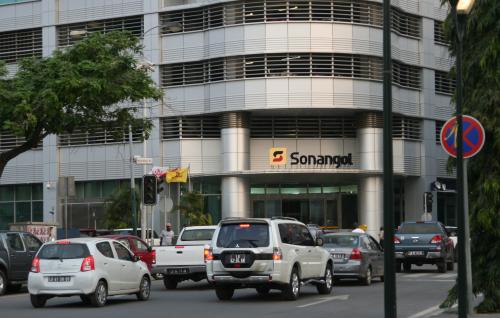This blog is the fourth and final in a series of posts surrounding the launch of the new Leveraging Transparency to Reduce Corruption (LTRC) report, “The TAP-Plus Approach to Anti-Corruption in the Natural Resource Value Chain.” You can read the other posts in the series here.
Since 2002, one of the highest-profile efforts to increase natural resource transparency in resource-rich countries has been the Extractive Industries Transparency Initiative (EITI), a multistakeholder initiative consisting of countries, companies, and civil society organizations. Any attempt to grapple with issues of transparency, governance, and anti-corruption in the natural resource sector must proceed with an understanding of the groundwork laid by the organization and the lessons learned from its experiences. As the EITI nears its 20-year anniversary, the time is ripe to analyze evidence surrounding EITI’s successes in opening up extractive industries data, along with its shortcomings—and its potential. Charting the EITI’s evolution and journey through the mechanisms of transparency, accountability, and participation can illustrate the ways in which truly effective natural resource governance can take root.
Today, the governments of 53 countries commit themselves to implementing the set of disclosure requirements known as the EITI Standard. (While the Obama administration committed the United States to EITI implementation in 2011, the Trump administration withdrew the country from the initiative in 2017.) While the EITI’s original focus was on transparency in revenue collection, the Standard has expanded to cover a wide variety of resource-related data, including contracts with extractive companies, data on resource production, and extractives-related employment numbers. In other words, the Standard now encompasses much of the natural resource value chain, the sequence of resource governance decisions beginning with the decision to extract a resource and ending with government spending of resource-derived revenues. To date, $2.64 trillion in natural resource revenues have been disclosed by EITI-implementing countries.
The EITI was launched after academics in the 1990s and early 2000s began to note that large endowments of natural resources, far from ensuring a country’s economic future and the well-being of all its citizens—as had been suggested by previous theories of development economics—in fact served to undermine economic growth and corrode institutions. At the same time, governments the world over were making deals with oil, gas, and mining companies that purportedly required that some of the revenue be returned to the state in the form of royalties, taxes, and other proceeds. These windfalls could have been the basis for a significant improvement in the material lives of these states’ citizens. But, too often, they were not.
Efforts to discover where of all the money was going had been stymied, with little information regarding how that money was spent—or indeed, even how much governments received from extractive projects—made publicly available. This opacity limited people’s ability to gauge whether their governments were using the resource wealth to benefit all citizens—who exercise sovereign rights to their countries’ resource endowments under international law—and so in turn inhibited their ability to hold their governments to account.
At least, that was the theory when the EITI was founded in 2002: that a flood of data about the money would unleash a wave of citizen engagement, which in turn would drive down corruption and improve development outcomes. But reality is far more complicated, and mechanisms beyond transparency are needed to more fully effect change.
Research has shown that while transparency is an important precondition for fostering accountability and ultimately reducing corruption, it is not, by itself, sufficient to promote change.
For example, a recent success stemming from EITI’s transparency model demonstrates that its disclosure regime is often only the first link in a chain leading to reduced corruption. In 2017, the nonprofit investigative organization Global Witness analyzed the Democratic Republic of the Congo’s 2014 EITI report. It found discrepancies which showed that the mining conglomerate Glencore may have paid more than $75 million between 2013 and 2016 to Dan Gertler, a businessman previously accused of bribing senior officials there. Spurred on by these and numerous other accusations of corruption, the United States imposed sanctions on Gertler in 2017. Those sanctions, in turn, may have prompted the then-president of the DRC, Joseph Kabila, to not run for reelection.
The EITI, as this example illustrates, is largely reliant on others—including “infomediaries,” such as journalists and civil society organizations—to translate technical information (which includes all resource-related disclosures) for a general audience. This, in turn, helps foster the participatory civic engagement that is critical to promoting accountability.
From the EITI’s inception to the present, transparency has been at the core of the its work, while participatory and accountability mechanisms were often weak or absent. To be sure, the EITI’s model requires all implementing countries to form multistakeholder groups (MSGs) consisting of representatives from government, industry, and civil society to oversee EITI implementation and thereby to presumably foster participation. But many MSGs are not representative of society as a whole, and (with a few exceptions), only operate at the national level, leaving critical stakeholders at the regional and city levels out of the discussion. Moreover, the EITI has been criticized for prioritizing the release of data and diminishing the decisionmaking authority of national MSGs. As a result, while some MSGs have become “legitimate arenas for dialogue,” in other places they often prove less able to impact decisions or prompt policy changes that are responsive to their concerns.
What participatory efforts like MSGs can miss—and what is increasingly recognized by academics and practitioners as a critical part of the picture—is an intentional focus on accountability mechanisms. Pioneering work by Jonathan Fox has argued in favor of a “sandwich strategy” to foster social accountability, which requires an opening from above in the form of commitment by reformists with power over policy implementation along with more traditional citizen engagement efforts that push from below. The mutually reinforcing mechanisms of the sandwich strategy can both strengthen citizen participation efforts and create accessible and responsive institutions.
Of course, a key challenge of the sandwich strategy involves the difficulty of finding powerful policymakers willing to engage with transparency and participatory efforts. Here, one useful tactic is to remove the roadblocks that can inhibit pro-reform policymakers. A requirement first introduced in the 2016 EITI standard could be of use in tackling this challenge: the mandatory disclosure of beneficial ownership information beginning in 2020. Beneficial owners (i.e., the real owners or those who benefit from the profits) of extractive companies often hide behind shell companies and other “unaccountable corporate entities,” making it impossible to tell if the real owners are, in fact, government officials themselves. These “politically exposed persons,” as they are known, are fundamentally unable to serve in the role of reformists committed to effective governance in natural resource management, since their personal interests override common interests. Furthermore, murky ownership schemes can fuel perceptions of corruption and trigger citizens to lose confidence in government institutions. While beneficial ownership disclosures are also unlikely to be a panacea for fostering top-down accountability efforts, they will greatly assist in the identification of those government officials who can never serve that role.
Evidence to date suggests that a bundled approach of transparency, accountability, and participatory (TAP) mechanisms is most effective in promoting effective governance—of natural resources and beyond. (Indeed, the EITI itself acknowledges that implementing the Standard is “not a silver bullet to solve all corruption issues,” but instead can be a “tool to identify and address weaknesses” in natural resource management.) Bottom-up citizen engagement efforts rely on transparency in policy, actions, and expenditure, so that citizens are aware of government officials’ actions and can work to hold them to account. Avenues for citizens to participate in the policy process and express their concerns to government officials further this work, and receptive, accountable policymakers committed to reform are indispensable for responding effectively to citizen concerns.
The Leveraging Transparency to Reduce Corruption (LTRC) project adds another hypothesis to this TAP troika: that careful attention to contextual factors; consideration of the implementation gap within TAP programs; and attention to natural resource-specific complementary institutions, structures, and programs that are likely to significantly interact with TAP interventions are needed to have a greater chance of success. (See here and here for more on the “TAP-Plus” hypothesis and the pilot studies we are undertaking to test it).
The EITI has achieved successes in producing high-quality open data across the natural resource value chain in implementing countries. Now, it is time to test new strategies by developing country-adapted and evidence-informed strategies to address corruption and to achieve sustainable development goals.
Research and editing assistance from Joseph Glandorf. Editing assistance from Robin Lewis.








Commentary
The evolution of the EITI and next steps for tackling extractive industries corruption
July 30, 2020